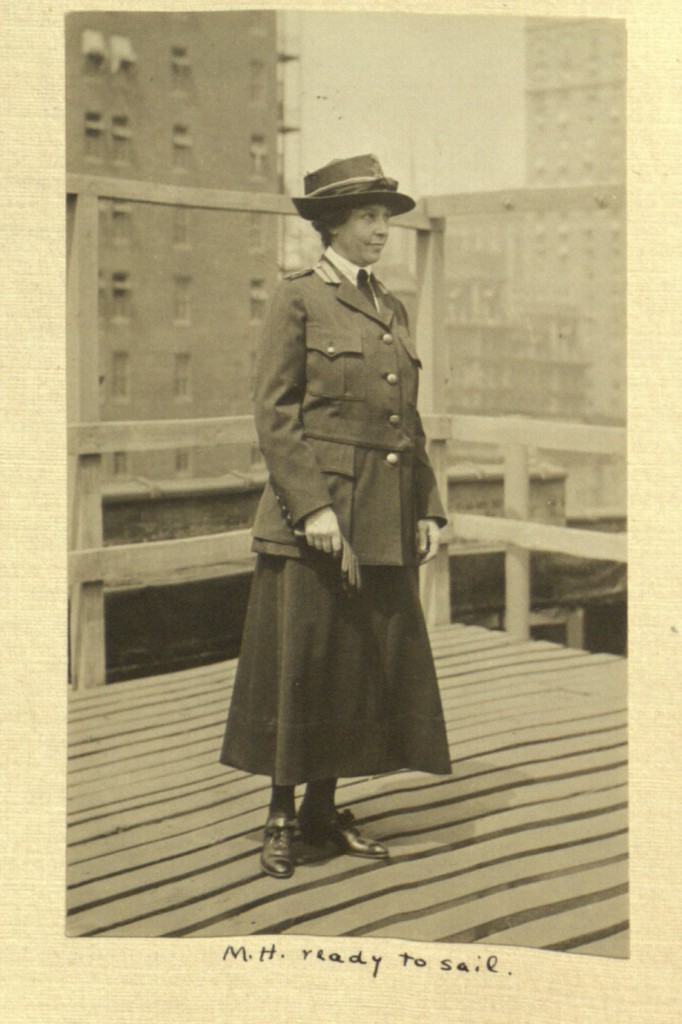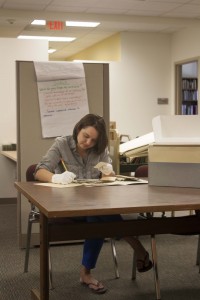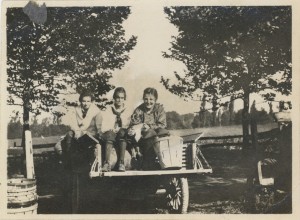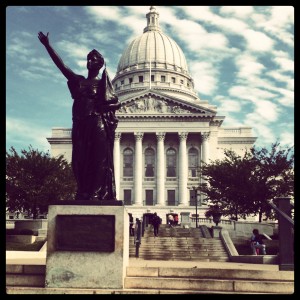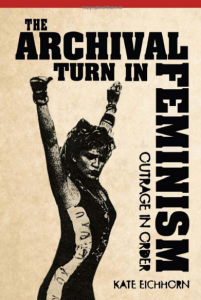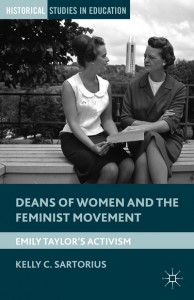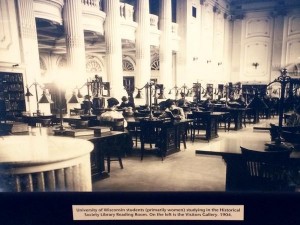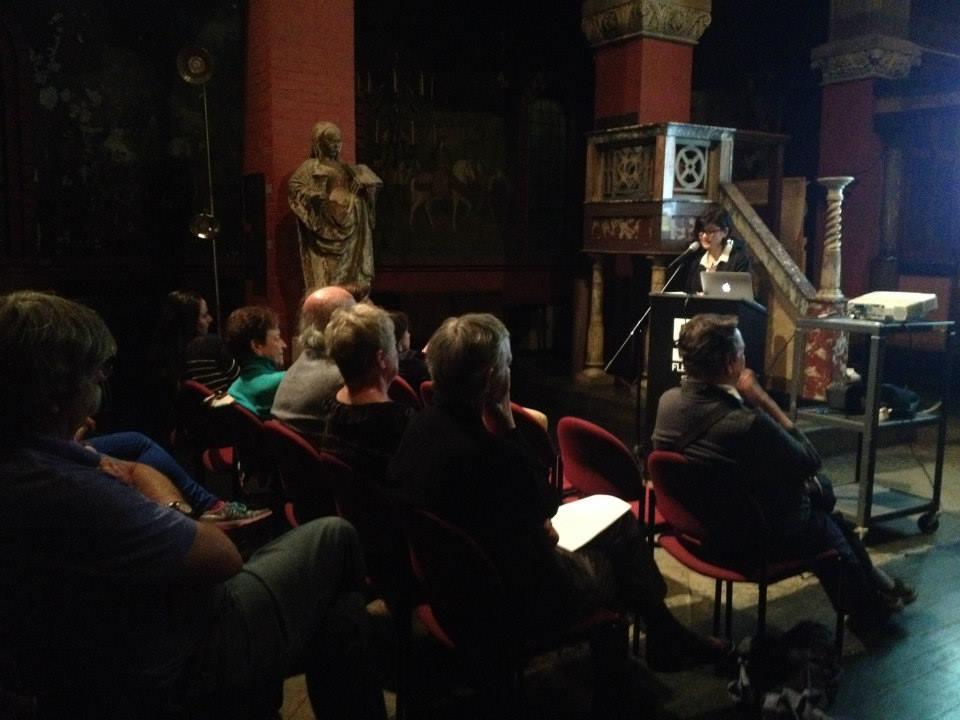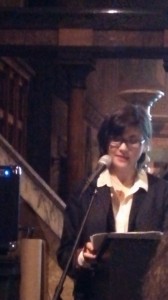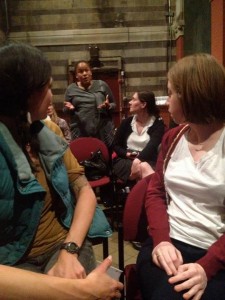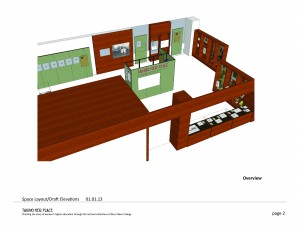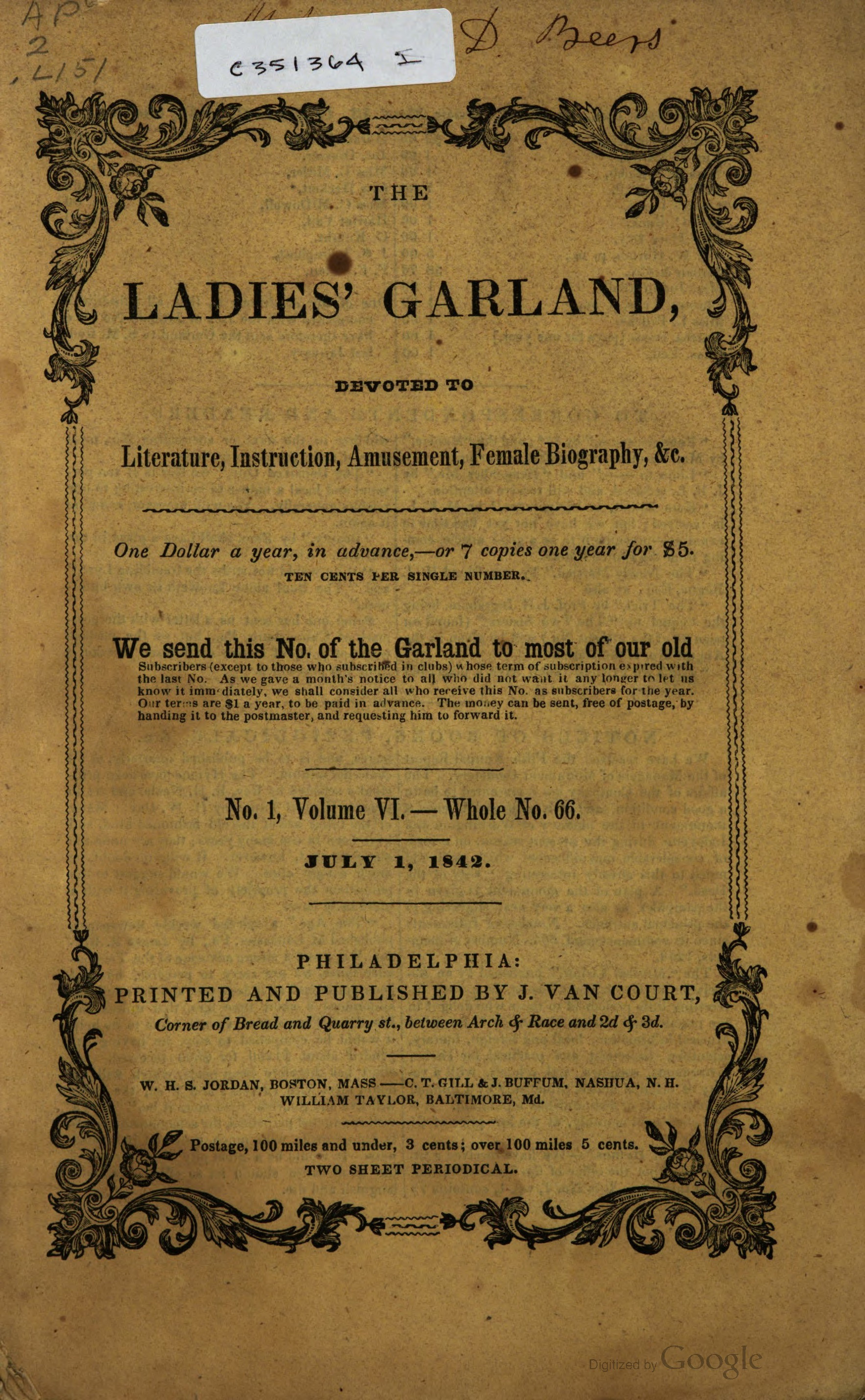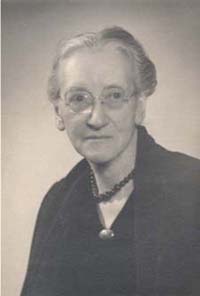Tag Archives: alumnae
“Sisters Launch Digital Archive” in the Alumnae Bulletin
Thanks to the Bryn Mawr Bulletin for featuring our seven institution collaboration, College Women: Documenting the History of Women in Higher Education in the November 2015 issue, which also features an important set of “Letters to the Editor” on the topic of Black at Bryn Mawr. We look forward to sharing our work with more alumnae/i in the new year!
Read more at the Bulletin site, here, and explore the College Women site online at collegewomen.org.
Margaret Hall and Bryn Mawr: On the Front Lines of the Great War
Featured
Veteran’s Day is observed every year on November 11th to commemorate the anniversary of the end of World War I, one of the pivotal events of modern history. As a women’s college, Bryn Mawr did not send students or alumnae into direct combat in the early twentieth century — an era before women entered battle alongside men — but members of our college community were very much linked to the turmoil in Europe.
Recent Bryn Mawr College graduate Elizabeth Reilly spent the summer of 2014 researching materials related to World War I in Bryn Mawr Special Collections. As part of her work Elizabeth immersed herself in the papers of Margaret Hall, Class of 1899, who volunteered with the Red Cross near the front lines in France. Using a wide range of sources, including Hall’s correspondence, photographs, ephemera, a bound manuscript that Hall herself compiled upon her return, and other resources from Special Collections, Elizabeth created a digital exhibit, using Omeka, that captures Hall’s unique story almost a century after the fact. Elizabeth’s project is now available on the Greenfield Digital Center website:
“Margaret Hall and Bryn Mawr: On the Front Lines of the Great War“
By drawing on the full resources of the college archives, Elizabeth weaves together several stories and perspectives into a rich narrative. Her exhibit incorporates findings from alumnae files and records, personal correspondence, ephemera, and published sources to build a biography of Hall’s WWI experiences that also highlights the experiences of other Mawrters volunteering in Europe and at home on Bryn Mawr’s campus.
Elizabeth also reflects on what it means to research physical materials in an age of digital methods and tools. Calling for an incorporation of both approaches, she writes, “navigating and learning from archival collections online can be invaluable in our present digital information driven culture. But,” she argues, “they should be used alongside physical collections whenever possible.”
“Margaret Hall and Bryn Mawr” is the latest student-produced digital project published on the Greenfield Digital Center‘s website, combining archival research and digital writing methods. On both our main site and our blog, we strive to support and publish student work that interrogates the relationship between women’s history and the digital world.
Do you have feedback on this project, or suggestions for new areas of research? Leave a comment below!
“Gender and Generations”: Oral Histories of Colleges and Universities at OHA 2014
Featured
It’s fall break at Bryn Mawr, and I’ve been traveling to share work with colleagues at the Oral History Association’s annual meeting in Madison, Wisconsin. As someone who has been teaching, advising, and doing oral history research for just over two years, this was my first visit to the OHA, and it was an energizing meeting of scholars and other practitioners from around the country. The conference was an opportunity to think critically about the stories we collect and who tells them; given our work at the Greenfield Digital Center, I was excited to spend a lot of the conference talking about (and listening to) histories of higher education, and women’s higher education in particular.
I had been invited to present at the OHA by American Studies scholar Carol Quirke, who is documenting the founding years of her institution — SUNY College at Old Westbury — with the site Experiments. Together with CUNY oral historian Sharon Utakis, our panel, “Places of Privilege, Places of Struggle: Oral Histories of Activism and Movement Building in the University” considered how oral history projects with the stated purpose of collecting evidence of social movements on campus “live” in University collections, and how they might inform current campus conversations. My paper, drawn from projects I previously directed at the University of Chicago, focused specifically on pedagogy, and what it means for oral history interviews to be the meeting point between past and present LGBTQ student activists. As the project Closeted/Out in the Quadrangles: A LGBTQ History of the University of Chicago enters its fourth year of work, and as I’ve moved on to Bryn Mawr, I find myself more and more compelled by the idea of college campuses as intergenerational sites of history and memory, with possibilities for current students, alumnae/i, faculty, and library staff to work together in expanding the scope of what counts as campus history.
I couldn’t help using the conference as a place to share the oral histories Brenna Levitin, Class of 2016, collected this summer as part of her digital project “We Are/We Have Always Been”: A Multi-Linear History of LGBT Experiences at Bryn Mawr College, 1970-2000. Brenna’s research will continue on next year, as will other projects chronicling less-known stories in Bryn Mawr’s past. As I noted in my conference paper, I have reason to be hopeful for continued engagement with these new histories. Our work is indebted to the worlds of feminist and queer archiving as they have expanded and spread into institutions like the university and independent collections over the past few decades. “For a younger generation of feminists,” Kate Eichhorn writes in The Archival Turn in Feminism, “the archive is not necessarily either a destination or an impenetrable barrier to be breached, but rather a site and practice integral to knowledge making, cultural production, and activism.” Her premise can be illustrated, on a small scale, at the university and college archives where I’ve worked: our classes and programs can draw new audiences — students involved with campus organizations — who feel that we might offer a productive space in which to explore an activist and social history.
In between giving my paper Thursday and presenting at Saturday’s oral history community showcase, I was excited to grab a seat at Friday’s standing-room only panel, “Current Feminist Practices of Oral History,” featuring a comment by Sherna Berger Gluck — whose 1991 edited collection Women’s Words: The Feminist Practice of Oral History is still used in women’s history classrooms. If, as Gluck contended, feminist oral history originated as a radical experiment, how are we still experimenting in our research and teaching? Kelly Sartorius, from Washington University in St. Louis, gave an important example of how oral history interviews can drive a research agenda. In her presentation “From a Life History into the Archives,” she argued for a “feminist life history approach.” Sartorius charted how she used the worldview of one narrator, University of Kansas Dean of Women Emily Taylor, to guide her work in the archives, and move away from the “waves” metaphor usually used as shorthand for mainstream feminist activism in the U.S. context. If we often talk about student protesters as the leaders in “second wave” feminist agitation on campuses, Sartorius’s research recovers the work of feminist university administrators, working with and for student activists in the middle decades of the twentieth century. Her new book, Deans of Women and the Feminist Movement: Emily Taylor’s Activism (Palgrave, December 2014) will certainly be on my winter break reading list.
Before leaving town, I also had a chance to stop in to the Wisconsin Historical Society, where I followed up on my research into Catholic women’s education at the turn of the century. I found exactly what I was looking for in the library’s historical pamphlets collection, with the added bonus of finding traces of women’s education history throughout the Society’s halls. Like other midwestern “land grant” universities, the University of Wisconsin admitted women “to the full advantages of the University” in the 1860s. (Having just filed my course proposal for next semester, when I’ll be teaching histories of women’s higher education in 19th and 20th century America, I was excited to see a turn-of-the-century photo of women students at work prominently displayed next to the reference librarian’s workstations!)
Although my Madison sojourn has come to a close, readers can still view our conference discussions on Twitter with the hashtag #OHA2014. The call for proposals for next year’s meeting, “Stories of Social Change and Social Justice,” was announced in the conference’s printed program; in the meantime, the Oral History Review will be recapping other important conference conversations. Given our ongoing project to digitize Bryn Mawr oral history interviews (currently languishing on cassette tape) and support new interviews conducted by our students, there’s much more to come.
Translating Archival Materials into the Digital Realm: Samone Rowe Uncovers a “Candid Campus”
Recent graduate Samone Rowe (BMC ’14) interned with The Greenfield Digital Center and Special Collections to create an original digital exhibit featuring the College Archives. Here she reflects on her connection to the archival materials documenting early Bryn Mawr students. You can view Samone’s project, Candid Campus, and other exhibits built on Bryn Mawr’s collections here.
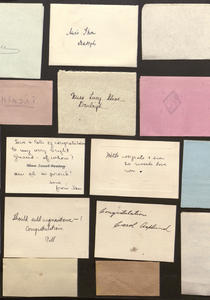
Lucy Shoe Meritt, Class of 1927, Bryn Mawr College Scrapbook and Photo Album Collection, Special Collections, Bryn Mawr College.
Last summer, I was granted the opportunity to work with the Photo Album and Scrapbook Collection within Bryn Mawr’s Special Collections. My research, completed over ten weeks, resulted in Candid Campus: The Lesser Known Narratives of Bryn Mawr College, a Greenfield Digital Center exhibit detailing hidden aspects of the college’s culture. The scrapbooks and albums included postcards, photographs, playbills, newspaper articles, and a myriad of other trinkets and clippings.
Since the internship summer served as the precursor to my final year at Bryn Mawr, I appreciated seeing which moments of their academic careers the school’s alumnae held most dear and comparing those experiences to my own. Even now, months later, I continue to wonder how I fit into Bryn Mawr’s legacy and what effect the school will have on my future.
A scrapbook I developed a somewhat personal connection with was that of Frieda Woodruff (née Wagoner), a graduate of the class of 1951. The design of her album was simple: small black-and-white photos explained by minimal text. Yet, the sentimentality of the album starkly contrasted its stark layout. Her photographs, which chronicled her final two years at the college, unexpectedly mirrored experiences of my own. Initially, I was amused by images of Woodruff and classmates waiting for their modern art course to begin and an allusion to “The Thinker” sculpture. As I continued to gaze at photos of her friends studying, sunbathing, and joking around, everything in Frieda Wagoner’s album seemed so natural and familiar to me. It was thrilling to see how the Mawrter spirit hasn’t changed much over the years.

Euretta Simons, Class of 1936, Bryn Mawr College Scrapbook and Photo Album Collection, Special Collections, Bryn Mawr College.
Creating the exhibit was both exciting and illuminating. As a history of art major with a strong interest in new media, working with the Greenfield Digital Center allowed me to explore translating visual and physical materials into the digital realm. Since the summer, I have continued to sharpen my newly-gained virtual exhibition skills by curating digital exhibits for class assignments and scanning and editing various types of archival materials with Special Collections. My ten weeks spent with the Greenfield Digital Center and the Scrapbook and Photo Album Collection were invaluable, and I hope I get the privilege to complete projects similar to Candid Campus in my post-Bryn Mawr endeavors.
History of the Seven Sisters: a quiz and a lecture
It’s time for a history of women’s education quiz!
(in honor of finals week)
- In their early years, which two Seven Sisters schools required domestic work as part of their students’ education in order to maintain femininity and prevent them from being perceived as unmarriagable?
- Which school is credited with starting women’s basketball in 1892, less than a year after the game was invented for men?
- When one school began to pursue a full college charter, it was vehemently opposed by then president of Bryn Mawr, M. Carey Thomas, who considered it to be the only real competition to Bryn Mawr’s formidable academic standard. Which school posed the perceived threat?
- Which school was the first and only to hire an all-female faculty upon its founding?
- From its beginnings, one school was known for a much more ethnically, religiously, and politically diverse student body than those of the others due to its urban environment and its lower tuition. Can you name the institution?Answers at the bottom of the post, and in the lecture video below!
These were among the new facts that I learned while researching for a talk on the history of the Seven Sisters Colleges, which I delivered to a group of alumnae/i from the Seven Sisters Alumnae Clubs of Philadelphia at the Fleisher Art Memorial on April 22nd. The event was organized by Erin Rocchio (MHC ’06), the president of the Mount Holyoke College Club of Philadelphia, and hosted by Elizabeth Grimaldi (BMC ’03), executive director of Fleisher. We had over sixty attendees, representing a dynamic and intergenerational group of Seven Sisters graduates.
It was a challenge to squeeze such a fascinating history into a single hour: each school has a unique story of its own, and I struggled to choose which details to omit. However, rather than focusing closely on individual schools, my goal was to show the ways in which all seven evolved together both in relation to each other and to the shifting cultural environment that surrounded them. The mid- and late-nineteenth century, which forms the backdrop against which the schools were launched, was a time of deep skepticism regarding women’s intellect. The climate gradually changed as the experiment of college education for women successfully navigated its first few years and mainstream culture began to embrace the idea. However, the twentieth century brought its own complex mixture of advances in women’s rights (such as the victory of the suffrage movement) and new barriers to women’s equality, some of which precipitated directly from the schools’ initial success. It is a very interesting history (in my opinion!) and I enjoyed researching the details of the schools’ foundings in addition to the ways that their identities developed in contrast to one another.
I was delighted to be able to talk to the alumnae/i about this history, and to hold a dialogue about issues facing institutions for women’s education in the present day. I synced the slides from my Prezi presentation with audio from the talk, which you can view and listen to below. You can listen to most of the talk** below, where it is synced with the slides from my Prezi presentation. Look for a brief cameo from Lisa Simpson towards the beginning! As always, please contribute your thoughts on the history, present, or future of women’s education in the comments.
http://www.viddler.com/v/8475189b
Quiz answers!
1. Mount Holyoke and Vassar
2. Smith College
3. Radcliffe College
4. Wellesley College
5. Barnard College
*Since the audio recording is clipped due to sound clarity in the beginning, my credits were omitted: the talk drew on many sources but relied most heavily on the excellent and informative Alma Mater: Design and Experience in the Women’s Colleges From Their Nineteenth-Century Beginnings to the 1930s, (Beacon Press, 1984) by Helen Lefkowitz Horowitz.
**The battery from the recorder unfortunately cut out before the discussion ended, but the first few minutes of dialogue are captured.
Taking Her Place: Final Day and Digital Exhibit
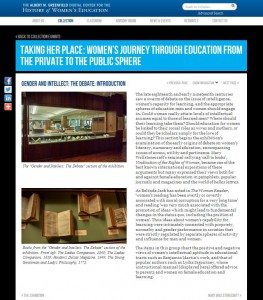 Taking Her Place has been open since January 28th, and in that time we’ve had some great feedback from alums, students, faculty, and members of the public. Among the visitors we were able to extend special welcomes to over the course of the semester were attendees of the Women’s History in the Digital World conference, guests of Bryn Mawr College Alumnae/i Reunion weekend, and the Women in Public Service Institute. We especially loved hearing stories from the alumnae who came to the exhibition, some of whom shared recollections of people and events that are featured in Taking Her Place. We spoke with President Emeritus Pat McPherson about her memories of Margaret Bailey Speer, a graduate of the class of 1922 who went on to lead a Yenching Women’s College in China until the second World War forced her return to the States. (She subsequently returned to the area as headmistress of the Shipley School just across the street from the College, and maintained a relationship with this institution for the rest of her life.) We learned many new things about the school’s history from our enthusiastic attendees.
Taking Her Place has been open since January 28th, and in that time we’ve had some great feedback from alums, students, faculty, and members of the public. Among the visitors we were able to extend special welcomes to over the course of the semester were attendees of the Women’s History in the Digital World conference, guests of Bryn Mawr College Alumnae/i Reunion weekend, and the Women in Public Service Institute. We especially loved hearing stories from the alumnae who came to the exhibition, some of whom shared recollections of people and events that are featured in Taking Her Place. We spoke with President Emeritus Pat McPherson about her memories of Margaret Bailey Speer, a graduate of the class of 1922 who went on to lead a Yenching Women’s College in China until the second World War forced her return to the States. (She subsequently returned to the area as headmistress of the Shipley School just across the street from the College, and maintained a relationship with this institution for the rest of her life.) We learned many new things about the school’s history from our enthusiastic attendees.For those who would like to revisit the exhibition, or who never had a chance to view it in person, we’re delighted to announce that an online version is now posted on our website!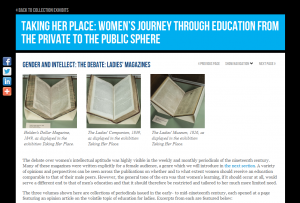
The digital exhibit follows the same narrative as the exhibition and includes all of the items that were displayed in the Rare Book Room gallery. However, the new online accommodates more text, which allowed us to give more information about the items. It also meant we were able to include some items that didn’t make it into the physical exhibition: enjoy
browsing layout designs from before the show was constructed, links to additional oral history interviews, and images that we did not have space for in the gallery. We think it makes for an equally good, if not even better, viewing experience.
The exhibition can be viewed here and it will remain on our site indefinitely. Thank you to all who were able to view Taking Her Place, and we hope that those of you who didn’t have the chance to see it in person will enjoy it as a digital resource!
As always, the co-curators from The Albert M. Greenfield Digital Center for the History of Women’s Education are happy to take questions, either about the process of envisioning and executing the exhibition or on the history of the college and women’s rise into the public sphere through education. If you’re curious to learn more about the history of women’s education and of Bryn Mawr College, take a look at some of the other exhibits and items from the collection that we feature on our site and keep an eye on this blog. Please write to GreenfieldHWE@brynmawr.edu, or follow us on Twitter @GreenfieldHWE to learn more about what we have planned next.
“Proper Study for Ladies” and other gems that didn’t make it into Taking her Place
When we were collecting material for the exhibition Taking Her Place, it was a challenge to find items that would tell the story of women’s ascent into higher education without relying too heavily on only text. Periodicals such as The Ladies’ Companion and The Ladies Garland are some of the best resources that we have for gauging society’s attitude towards female intellectualism, as the articles they featured show the developing shape of public opinion. However, they do not make ideal exhibit items: arranged behind glass, the books are difficult or impossible to read at length, and an exhibition dominated by unreadable books makes for a bland visual display. Therefore, we found ourselves with many fascinating textual objects that illustrated the story we wanted to tell but did not have a place in the exhibition. Many of those items hold an important place in the narrative of women’s rise into the public sphere, and as we move into the final week of the exhibition, we will highlight a few of them on this blog in order to more fully flesh out the themes that we address in that space. We will post more material in conjunction with the release of an online version of the exhibition, which will take the form of a digital exhibit like the others on our website.
One item that we would have like to include is this article from an 1839 issue of The Ladies’ Garland, entitled “Proper Studies for Ladies,” which touches on many of the themes common to the opinion pieces of the era. As higher education for women appeared on the horizon, society grappled with what forms of knowledge would be appropriate for a woman to pursue. In this article, the anonymous male author juxtaposes the intellectual and commercial realms of society and seems to feel dubiously about women’s place in either.
The prevailing message of the piece is that modern women are wont to forgo the enriching study of history and natural philosophy in favor of “fashionable trifles,” “idle romances and puerile tales.” Instead, he writes, ladies “of the first rank” ought to “form their taste upon the best authors, and collect ideas from their useful writings.”
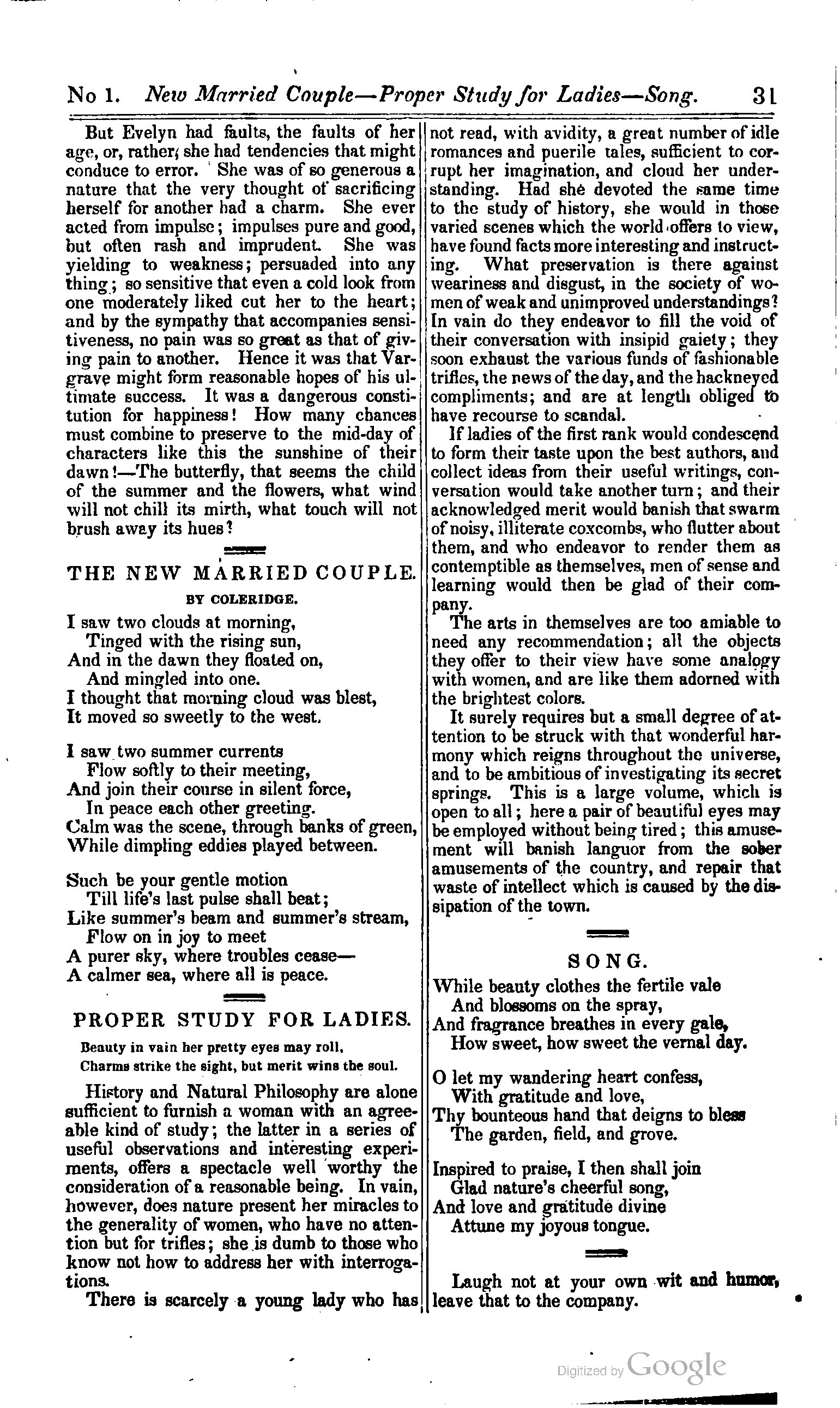
Page 31 of The Ladies Garland, Volume II, 1839, including “Proper Study for Young Ladies.” Click for enlarged view.
While I was combing through contemporary journals and magazines to get a sense public opinion across the era, this piece stood out to me as unusual. It struck me as fairly advanced for 1839 that a male author would take for granted that intellectual study was both available to and appropriate for women. However, though it seems progressive in its advocacy for ladies’ serious study, there is a strong conservatism at its core that I will devote this post to exploring. This paradox is characteristic of many of the articles that Jennifer and I read while researching for the exhibition: I’ve learned that progressivism and conservatism often move together in strange ways as society adjusts to major changes, and are rarely as separable or black-and-white as I would have initially expected to find them.
It fascinates me that the author is certain at such an early date that any woman who wished to could gain access to intellectually stimulating study. “This is a large volume,” he writes of such pursuits, “that is open to all.” However, “In vain…does nature present her miracles to the generality of women,” as if the study of natural science was so available that women would have to work hard not to be exposed to it. It is unclear exactly how he expected them to engage with such material, considering the state of formal schooling at the time: Oberlin College, the first co-educational college in the United States, had been founded only six years earlier, in 1833. The only other form of secular post-secondary education for women at the time was the seminaries that offered training for a teaching career, of which there were eight in existence nationwide in 1839. Since formal higher education was hardly widespread, the author therefore seems to imagine that women should be pursuing academic curiosity in a self-guided capacity.
Writers of a previous age, and many who wrote well into the 1800s, considered the education of a woman to be tantamount to her corruption. This author clearly disagrees, but if a woman of virtue could be an intellectual, what sort was she to be and to what end was she to use her sophistication? A hint can be found at the very beginning of the piece, in the epigraph:
“Beauty in vain her pretty eyes may roll,
Charms strike the sight, but merit wins the soul.” [1]
This quotation frames the article by asserting the value of substance over appearance, which is consistent with the article’s rejection of ornament—but, notably, it also situates the matter within the context of women’s appeal to others: it lays groundwork for an article that will posit female intellectualism as a tool for attraction; in short, another form of ornament.
The author’s thesis is that because they fail to take advantage of the intellectual richness available to them, most women thus reduce their prospects for good matches by offering only conversation which is vapid and unappealing to respectable men—who are, of course, the true victims of this unfortunate situation. “What preservation is there against weariness and disgust,” he ruminates, “in the society of women of weak and unimproved understandings? In vain do they endeavor to fill the void of their conversation with insipid gaiety; they soon exhaust the various funds of fashionable trifles, the news of the day, and the hackneyed compliments; and are at length obliged to have recourse to scandal.” The true goal, therefore, of women’s learning, is to make them into better companions.
The article suggests that the idea of what would corrupt women was changing. The previous belief was that knowledge itself would corrupt, whereas here it is the wrong kind of knowledge that is to be feared—In other words, a misuse of intellectual powers. Indeed, language of misuse, in the form of waste and misdirected spending, permeates the piece. Three examples come to mind: the phrase “in vain” appears three times including the epigraph, each instance describing a woman (if we count the personified Nature) fruitlessly expending effort in order to appeal to another. The unlearned lady whose foolish prattle fails to impress “soon exhaust[s] the various funds of fashionable trifles.” (Italics mine.) And, at the end of the article, the author bemoans the “waste of intellect which is caused by the dissipation of the town.” Instead of such wasteful behavior, he suggests that women “collect” (ideas from the best authors) rather than spend. This language underlies his portrayal of women consumed with the trivial trappings of femininity, especially those that could be linked to commercialism and had an air of cheapness: they were attracted to the “fashionable trifles” that were being marketed to them (in magazines just like this one), and even their trivial conversation (“the news of the day,” “scandal,”) is ephemeral and probably harvested from the gossip columns.
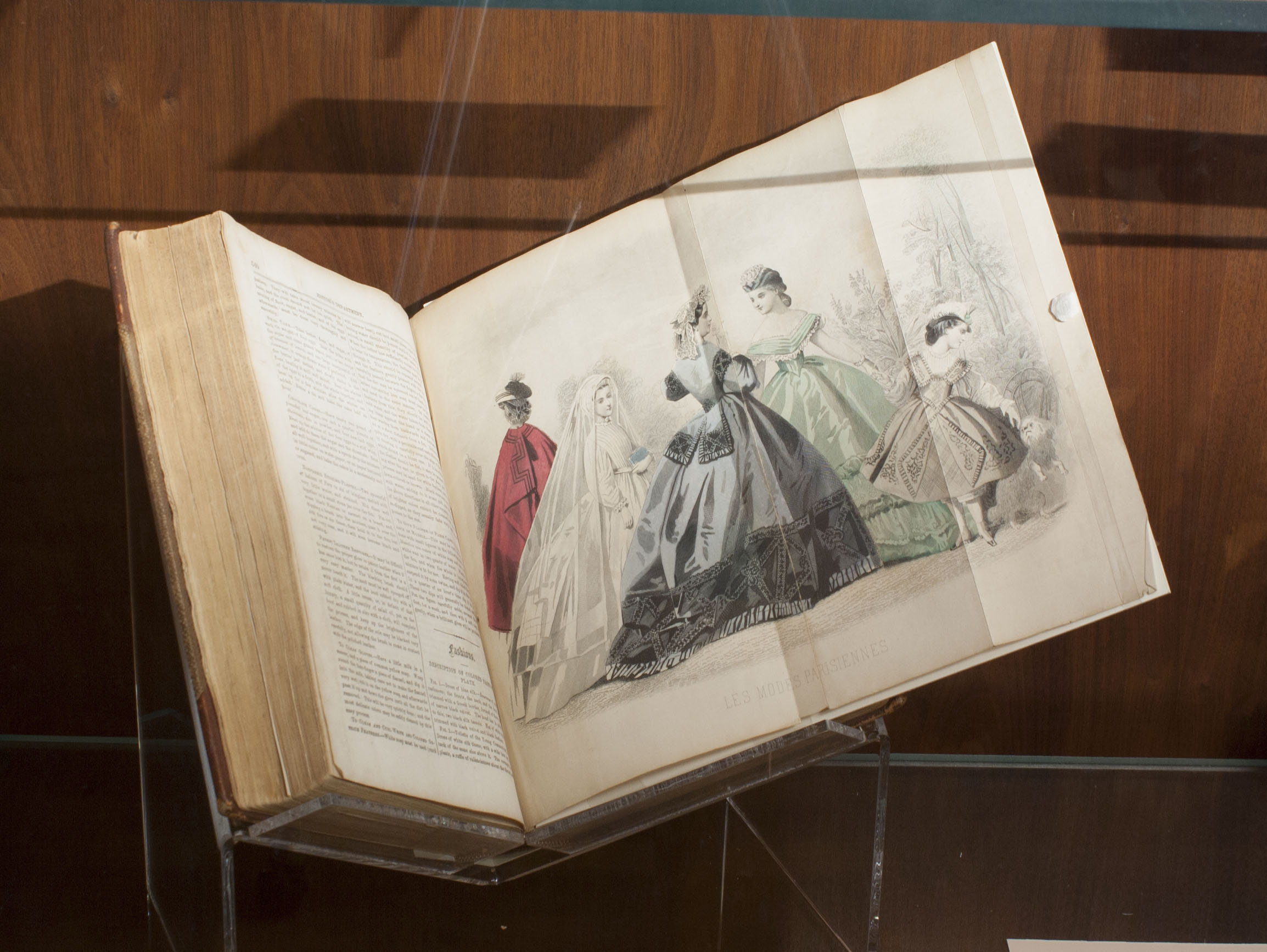
The Ladies’ Friend, another popular periodical at the time, interspersed fiction and opinion pieces with large pull-outs like this one depicting the fashions of the season.
Considering all of the negative associations that he establishes between women and commercial economy, perhaps the feminine ideal that the author paints (studious, yet passive, and economically disengaged) is a paranoid reaction to women’s growing economic power as a class of consumers. He manages to exclude women from both the commercial and intellectual realms: he blames them for partaking in the former, and suggests that they would be welcome in the latter if only they had the virtue to earn themselves a place there. And do they? He writes that “scarcely a young lady” exists who has not fallen into the pitfalls of cheap and entertaining literature. Though he idealizes the woman who devotes her time to academic study, he speaks of such women as if they are in practice an impossibility, a mythical being. Women’s real practices are demonized, and the hypothetical woman who “gets it right,” so to speak, doesn’t exist: perhaps he is so threatened by female agency that he is compelled to write them out of all public realms. So, if they can exist productively nowhere in the public sphere, what use are women to society? The one role that the author feels comfortable ascribing to women is that of passive indicator of the state of society. He ends with the proclamation that the “amusement [of proper study] will…repair that waste of intellect which is caused by the dissipation of the town,” as if women’s unintellectualism is a symptom of a societal disease. He implies that the health of society can be read through the quality and state of its women, positing them as a kind of diagnostic tool rather than as a class of people.
This article, one of many that we would have liked to include more prominently in Taking Her Place, demonstrates several themes that are common to the opinion articles of the age. It shows a surprisingly advanced advocacy for women’s learning, while still clinging rigidly to the traditional role of the subordinate an ornamental woman. It also conspicuously lacks an argument for education for its own sake: it was much more common to posit education as a means to serve some aspect of traditional femininity, such as aptitude for motherhood or (as seen here) male companionship. The juxtaposition of commercial and intellectual pursuits was also a major topic of writings of the time, especially with an air of blame towards any woman who demonstrated too much affinity for the former. Combing through these books and journals was a fascinating activity and gave us a broad sense of the complexity of changing opinion across an era. Anybody who is interested in learning more, or in reading other articles from our wide collection, is encouraged to come visit in Bryn Mawr Special Collections in Canaday Library and browse the collection for themselves.
[1]Though uncredited and misquoted, the lines are from Alexander Pope’s “The Rape of the Lock,” first published in 1712. The first line in the original text reads “Beauties in vain their pretty eyes may roll.”
TONIGHT: Professor Elaine Showalter to speak as part of Taking Her Place Exhibition Program
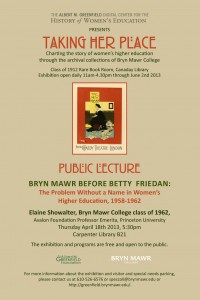 This is a reminder that The Albert M. Greenfield Digital Center for the History of Women’s Education will host Professor Elaine Showalter, Bryn Mawr College class of 1962, Avalon Foundation Professor Emerita, Princeton University at Bryn Mawr College tonight. This is part of the Friends of the Library exhibition program in which we also hosted Professor Helen Horowitz to open the show. Taking Her Place will run until June 2nd 2013, finishing with a series of dedicated tours as part of Alumnae Reunion Weekend.
This is a reminder that The Albert M. Greenfield Digital Center for the History of Women’s Education will host Professor Elaine Showalter, Bryn Mawr College class of 1962, Avalon Foundation Professor Emerita, Princeton University at Bryn Mawr College tonight. This is part of the Friends of the Library exhibition program in which we also hosted Professor Helen Horowitz to open the show. Taking Her Place will run until June 2nd 2013, finishing with a series of dedicated tours as part of Alumnae Reunion Weekend.
Professor Showalter’s talk is titled: “Bryn Mawr Before Betty Friedan: The Problem Without a Name in Women’s Higher Education, 1958-1962″.
The talk will be held on Thursday April 18th 2013 at 5:30pm in Carpenter Library B21.
Professor Showalter’s lecture will be followed by a reception at the Taking Her Place exhibition, Rare Book Room Gallery, Canaday Library, at 6.30pm. All are welcome to attend.
For directions to the campus, please see http://www.brynmawr.edu/campus/visiting.shtml
There is no need to RSVP, but please direct any questions you have about this talk to greenfieldhwe@brynmawr.edu and don’t forget to follow us on Twitter for regular updates – @GreenfieldHWE
“The Seed of the World that is to Be”: the Activism of Emily Greene Balch
On November 14, 1946, Emily Greene Balch became the third woman to be awarded the prestigious Nobel Peace Prize.1 In commemoration of that event, The Albert M. Greenfield Center for the History of Women’s Education has compiled the following biographical overview of Balch’s remarkable life and achievements.
“Differences as well as likenesses are inevitable, essential, and desirable. An unchallenged belief or idea is on the way to death and meaninglessness.”
–Emily Greene Balch, Nobel Lecture
One of Bryn Mawr College’s most distinguished alumnae is Emily Greene Balch, who, in 1889, became a member of the the school’s first graduating class. In an era in which bachelor’s degrees for women were still a novelty and post-college careers were even more rare, Balch set herself apart by effecting real change on both the local and global scale. Her history stands in direct opposition to the dissenting voices of her time that asserted that women were not worth educating, and her achievements appear no less remarkable today.
Born in 1867, Balch grew up in the Jamaica Plain area of Boston. Though she would later convert to Quakerism in 1921, she was heavily influenced by her Unitarian upbringing. Late in her life she would recall a sermon by Unitarian minister Charles Fletcher Dole that inspired her to dedicate herself to the “service of goodness whatever its cost” when she was just ten years old. “In accepting this pledge,” she wrote, “I never abandoned in any degree my desire to live up to it.” 2
Balch was also a dedicated student: her excellent academic performance at Bryn Mawr, where she took her degree in Greek and Latin, culminated in her being awarded the prestigious European Fellowship to fund a year of further study abroad. After a year studying sociology in the US, she applied the funds from her fellowship to a year at the Sorbonne to study poverty alleviation policies, and returned to Boston determined to apply her education to the task of realizing her moral convictions. Her most notable achievement during her first years out of school was the 1892 founding of the Denison House College Settlement, an initiative to bring “social and educational services into a poor immigrant neighborhood” by integrating educated women and the urban poor in a living environment.3 From early in her career she acted on the belief that the most effective way to create change was by erasing divisions between groups of people, fostering contact and mutual understanding.
Driven by a desire to instill her own compassion in others, she decided to become a teacher and joined the faculty of Wellesley College after several more years of preparatory study. Though she was successful as a professor, Balch continually prioritized hands-on work and research, taking leave (both paid and unpaid) to conduct research on Slavic immigrants. This effort produced the highly acclaimed work Our Slavic Fellow Citizens (1910). In 1913 she became the chair of the Department of Economics and Sociology at Wellesley.
Balch advocated unequivocally for peace in the years leading up to and during the First World War. Her active involvement in international politics began while she was still teaching at Wellesley: in 1915 she joined the International Congress of Women at The Hague, an organization that took the stance of promoting mediation rather than military action in response to the conflict in Europe. However, her outspoken avowal of peace during the war was controversial, eventually leading to her dismissal from Wellesley College.
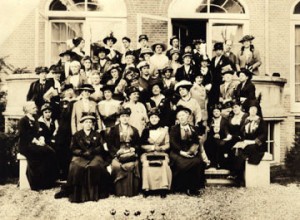
U.S. delegation to the International Conference of Women for a Permanent Peace, held at The Hague, The Netherlands, 1915
After departing from Wellesley in 1918, Balch continued to champion peace both in her editorial work with The Nation and in her co-founding (with Jane Addams) of the Women’s International League for Peace and Freedom. In 1946, she became the third woman to be awarded the Nobel Peace Prize.
Balch’s life is notable not just for her international advocacy, but also for the way in which she wove together her global vision with her ability to foster connections between disciplines, groups, and individuals. She lived this vision fully as a student, an academic, a poet, a Quaker, and as a public voice for change. In her acceptance speech for the American Unitarian Association Award in 1955, she used words of connection, unity, and growth that were consistent with her lifelong commitment to global community: “The time has come to break down the dikes and let the healing waters flow over us. I see in us, young and old, the seed of the world that is to be.”4
Further reading on Emily Greene Balch:
Nobel Lecture (1946)
Emily Greene Balch: the Long Road to Internationalism (2010)
Improper Bostonian: Emily Greene Balch, Nobel Peace Laureate, 1946 (1964)
Emily Greene Balch of New England: citizen of the world (1965)
1. The first was Bertha von Suttner in 1905; the second was Jane Addams (close friend and colleague of Emily Green Balch) in 1931.
2. Miller, Heather. “Emily Greene Balch: Nobel Peace Laureate 1967-1961.” Harvard Square Library. Web. 11 November. 2012. <http://www.harvardsquarelibrary.org/unitarians/balch.html>
3. Buehrens, John A. Universalists and Unitarians in America: A People’s History. Boston: Skinner House Books, 2011. p. 130
4. Benjamin, Michelle; and Mooney, Maggie. Nobel’s Women of Peace. Toronto: Second Story Press, 2008. p. 35

